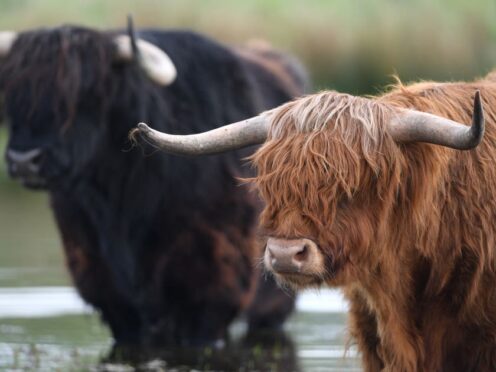
Farmers have been asked for their views on plans to fit all newborn cattle with electronic ear tags.
The Scottish Government said its plans would see bovine electronic identification provide cattle keepers with an easier way to collect and store information, leading to improvements in efficiency and safety.
All cattle born in the UK and the European Union currently need to be uniquely identified with ear tags, with the traceability helping to prevent disease spread and protecting public health.
A consultation has now been launched on whether the current non-computerised system should be updated with the use of an online register for cattle and the removal of paper passports for the electronically identified animals.
Agriculture minister Jim Fairlie visited a farm in Jedburgh in the Scottish Borders to see the technology in action.
He said: “Farmers and crofters in Scotland have always embraced new and innovative technologies to help improve food production and protect our environment.
“Since 2017 we have worked closely with the cattle industry to identify new methods of cattle identification that will help reduce costs and improve efficiency for cattle farmers. The new system is the latest example of the world-leading innovation on show within Scottish agriculture.
“I would encourage those involved in the cattle industry to make their views known on this important issue.”
Martin Kennedy, president of the National Farmers Union Scotland, welcomed the consultation.
He said: “We hope that this consultation will finally progress the introduction of bovine EID, and, ultimately, will negate the need for paper passports, offering both industry and government a significant saving.”
The consultation will close on June 27.

Enjoy the convenience of having The Sunday Post delivered as a digital ePaper straight to your smartphone, tablet or computer.
Subscribe for only £5.49 a month and enjoy all the benefits of the printed paper as a digital replica.
Subscribe